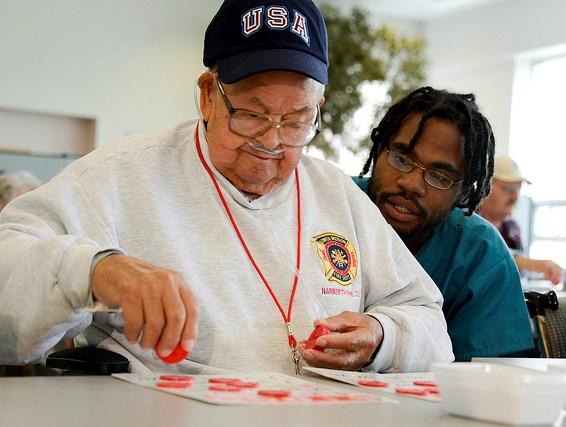An infection control program approved by and tailored to the needs of veterans residing in a community living center reduced the rate of methicillin-resistant Staphylococcus aureus (MRSA) infections 89% over 4 years, according to research presented at the 44th Annual Conference of the Association for Professionals in Infection Control (APIC).
As is the case with many congregate living facilities, the risk of MRSA environmental contamination and person-to-person transmission is high at the W.G. (Bill) Hefner VA Medical Center's Community Living Center (CLC) in Salisbury, N.C. MRSA prevalence at the CLC had reached a staggering 70% by 2012, prompting Veterans Health Administration (VHA) officials to consider an intervention that would have drastic results yet remain sympathetic to residents' autonomy.
Researchers proposed a course of action to the CLC's all-veteran town council and gained approval, according to a Jun 15 APIC press release. In 2013, VHA infection preventionists embarked on an aggressive surveillance, screening, and decolonization program, leading to a 64% reduction in MRSA prevalence during the intervention's first year.
Previous program failure
Veterans expect the 120-bed CLC to function as a home that also serves their healthcare and rehabiliation needs. Residents and healthcare staff can move freely between rooms, movie theaters, and a downtown commons.
In 2007, a MRSA-reduction intiative was implemented in this unique environment with catastrophic results, the press release said. The intervention relied on restrictive contact precautions: isolation of colonized residents, the use of dedicated tools and materials, and extensive personal protective equipment (PPE) protocols for CLC staff.
Because of the high rate of MRSA colonization in CLC residents, contact precautions were applied to most rooms. These restrictions were unacceptable to veterans who wanted to feel at home, rather than as if they were living in an acute-care hospital. The program's inefficiency and the lack of staff compliance to onerous PPE rules, along with MRSA rates that continued to climb, led researchers to look for better solutions.
Environmental, patient decolonization
In 2012, VHA infection preventionists began a new, resident-approved initiative that targeted the two main areas of MRSA transmission in the CLC: environmental and person-to-person.
Staff screened all MRSA-negative residents and decolonized MRSA-positive veterans with daily chlorhexidine baths and intra-nasal mupirocin for 5 day, also including veterans who newly tested MRSA-positive.
Any veteran newly admitted to the CLC who was found to be MRSA-positive underwent immediate decolonization. All residents were screened quarterly, and new positive tests were met with the 5-day decolonization program.
To address MRSA surface contamination within the CLC setting, staff working in environmental services used ultraviolet C light to conduct daily terminal cleaning of empty rooms, bathrooms, and common areas.
During the program's first year, MRSA rates fell from 45% of residents in the first quarter of 2013 to 16% by the end of the year. Because the VHA spends roughly $28,000 to treat an individual MRSA infection, the researchers estimate that the intervention saved about $2.2 million and prevented 64 infections from 2013 to 2016, the report said.
"This research shows the positive impact that targeted infection prevention interventions can have on patient safety and healthcare costs. It is important that infection preventionists have the latitude and resources to design programs to address the infection risk at their facilities," said 2017 APIC President Linda Greene, RN, MPS, according to the press release.
Resident and staff buy-in
Even with initial approval from the veterans' CLC town council, the strict testing and decolonization procedures required a long period of adjustment for residents and staff. However, once the intervention proved effective at drastically reducing MRSA colonization, support for the program quickly grew.
"In addition to the substantial monetary savings from using less personal protective equipment, this initiative also fostered a better environment for residents and staff, improving the overall workflow of the living centers," said Lanette Hughes, RN, BSN, infection preventionist at the CLC.
The ability and autonomy of staff and residents to design an infection control strategy that mets the needs of a unique environment while respecting the wishes of residents was paramount to the intervention's success, the researchers said.
APIC's annual meeting began Jun 14 and concludes today.
See also:
Jun 15 APIC press release























